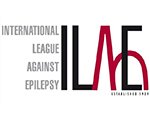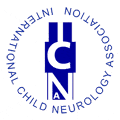Transverse Myelitis
Transverse Myelitis is a neurological disorder characterized by inflammation across both sides of a section of the spinal cord. In most cases, there is damage to the myelin sheath that covers the nerve cells. The condition may affect both adults and children. There is no apparent familial predisposition.
Causes
Although the exact cause of transverse myelitis is unclear, there are certain conditions that appear to play a role in its development. Certain viruses such as herpes virus and enteroviruses can directly infect the spinal cord. Other viruses may trigger an immune response that damages the spinal cord. Transverse Myelitis may also occur after recovery from a gastrointestinal or respiratory tract infection. It may also be associated with the development of multiple sclerosis and other autoimmune disorders.
Impact
Transverse myelitis can cause severe disability and many patients experience frustration, anger, sadness, and depression. All these emotions should be considered normal in the face of such a life-altering condition. However, if depression persists over a prolonged period, it might be advisable to seek therapy.
Symptoms
The signs and symptoms of transverse myelitis include:
- Weakness of the Limbs: Some children experience heaviness in the legs, dragging one foot, or stumbling.
- Pain: Depending on the segment of the spinal cord that is affected, your child may experience pain in the lower back, shooting pain down the arms or legs, and pain in the chest and abdominal region.
- Abnormal Sensations: Your child may experience tingling, numbness, and hot or cold sensations. There may also be extreme sensitivity to light touch of clothing.
- Bowel and Bladder Symptoms: These include frequent urination, difficulty urinating, bladder or bowel incontinence, and constipation.
Types
Transverse myelitis may be acute with symptoms developing over a few hours to several days or subacute with symptoms developing over a week to a month.
Diagnosis
A diagnosis of transverse myelitis may be made based on your child's signs and symptoms, a complete neurological exam, and diagnostic tests such as an MRI to identify inflammation in the affected section of the spinal cord, a spinal tap to evaluate the cerebrospinal fluid, and blood tests to identify antibodies or infection.
Untreated
If left untreated, the symptoms continue to progress over time and can lead to paralysis and permanent impairment of function of the affected section of the spinal cord.
Treatment-options
Symptoms of transverse myelitis are usually treated with intravenous steroids to reduce inflammation, pain relievers, antidepressants, and anticonvulsant medications. Other medications to treat associated complications such as bowel or bladder dysfunction may also be prescribed. Additional therapies focussing on long-term treatment include physical therapy to improve strength and coordination, occupational therapy to aid in activities of daily living, and psychotherapy to help with emotional recovery.








